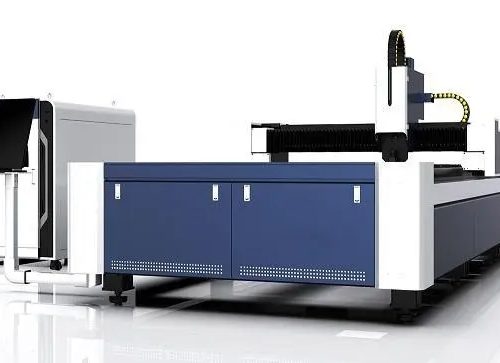
The domestic laser industry has grown from nothing, and the laser has grown from weak to strong. It has gone through fifty years of great changes!
We all know that China’s laser technology has entered the international popular list, but many people do not know the difficulties, and no one said about the development history of China’s laser. Today, we take you to review the development history of China’s chemical laser.
Dalian Institute of Chemical Physics, Chinese Academy of Sciences, has been engaged in chemical laser research in China for more than 50 years. From starting from scratch to the first HCl chemical laser in China, from adhering to “non consensus” innovation, to successfully developing China’s first HF/DF chemical laser, to successfully developing China’s first oxygen iodine chemical laser and special HF/HBr chemical laser, Chemical laser research has achieved the goal of continuous breakthrough, upgrading and surpassing from scratch, from small to large, from weak to strong, from basic theoretical research to key technology research, to technology integration. This spirit is worth learning.
Since the establishment of the Institute of Chemical Physics, the scientific research direction has always been oriented to the needs of major national tasks. As early as July 1960, American scientist Maiman made the world’s first ruby laser. In 1961, Canadian scientist Polanyi first proposed the idea of realizing infrared chemical laser by generating vibration rotation layout inversion through chemical reaction. Western countries have begun to explore the use of laser as a variety of optical weapons, Chairman Mao gave special instructions, and we also sent a group of people to study it.
In 1962, the Institute of Chemical Physics set up a chemical laser research group. Under the condition of weak basic knowledge of chemical lasers and the blockade of technology and equipment by western countries, we began to make difficult exploration. In 1966, we developed the first chemical laser pumped by chemical energy triggered by light, which was only two years later than the first pulsed HCl chemical laser in the world created by American scientists Kasper and Pimentel.
In order to make the laser have more energy, better quality and higher efficiency, we officially started the research of high-energy chemical lasers. In 1973, the Chemical Laser Research Laboratory was established. In 1974, we successfully developed a combustion driven continuous wave high power HF/DF chemical laser. While developing laser related equipment, we also studied the mechanism and basic theory of chemical lasers. Through continuous research, we started the research on new “pump” reactions and molecular collision energy transfer dynamics, creating the research field of molecular reaction dynamics in China.
In 1982, we successfully developed the first chemical oxygen iodine laser, which opened the prelude to the research of high energy and short wavelength chemical oxygen iodine laser in China. In 1994, our chemical oxygen iodine laser made a new breakthrough, which improved the laser volume by an order of magnitude. Our chemical oxygen iodine laser technology entered the world’s advanced ranks, second only to the United States. The country attaches great importance to the success of the technology.
The scientific researchers at that time, regardless of the simple conditions, worked hard. After the task of tackling key problems was assigned, people from different majors and groups united with each other and devoted themselves to tackling key problems of the national task. In order to build three 50 cubic meters of experimental vacuum tanks, they went to the Ministry of Metallurgy to allocate 20 tons of steel plates. In order to process such tanks, the scientific researchers in the institute and the master workers worked together for more than 10 hours a day, I ate at the construction site and slept in the auditorium on the 4th floor. After more than 40 days of hard work, I finally completed the task on time.
This is the hard work of several generations of researchers, promoting the continuous development of chemical laser research. Today’s chemical laser research laboratory is no longer the original dozens of people. Today’s research team has become a team of hundreds of people. The organizational structure has changed from horizontal to vertical. The experimental base has also changed from dozens of square meters to more than 20000 square meters now. The equipment is also brand-new. Now there are hundreds of international advanced instruments, which shows us the great development of the chemical laser laboratory, It is hoped that a new generation of researchers will continue to carry forward chemical lasers.
Extended Reading
Dalian Institute of Chemical Physics, Chinese Academy of Sciences
(hereinafter referred to as “Dalian Institute of Chemical Physics”) was founded in March 1949. It was then named “Dalian University Scientific Research Institute”, renamed “Institute of Chemical Physics of Chinese Academy of Sciences” at the end of 1961, and officially named “Dalian Institute of Chemical Physics of Chinese Academy of Sciences” in 1970.
Dalian Institute of Chemical Physics is a comprehensive research institute that pays equal attention to basic research and application research, combines application research and technology transformation, and takes the task as the main feature. Over the past 70 years, Dalian Institute of Chemical Physics has gradually formed its own scientific research characteristics through continuous accumulation and adjustment. In 1998, Dalian Institute of Chemical Physics became one of the first pilot units of the Knowledge Innovation Program of the Chinese Academy of Sciences. In 2007, the National Laboratory for Clean Energy was approved by the state. In August 2010, Dalian Institute of Chemical Physics revised its development strategy at the “Innovation 2020” development strategy seminar to “give full play to the comprehensive advantages of disciplines, strengthen technological integration and innovation, take sustainable energy research as the leading role, adhere to the coordinated development of resource and environment optimization, biotechnology and advanced materials innovation, play an irreplaceable role in the national economy and national security, and create a world-class research institute.”
Dalian Institute of Chemical Physics focuses on catalytic chemistry, engineering chemistry, chemical laser and molecular reaction dynamics, as well as modern analytical chemistry and biotechnology.
Founder of chemical laser: Zhang Cunhao
Zhang Cunhao, born in Wudi, Shandong, Tianjin, is a physical chemist and laser chemist, the founder of China’s high-energy chemical laser, and one of the founders of molecular reaction dynamics.
He was admitted to Xiamen University in 1943, graduated from the Department of Chemical Engineering of National Central University in 1947, obtained a master’s degree from the University of Michigan in 1950, was elected as an academician of the CAS Member in 1980, was elected as a member of the Standing Committee of the Ministry of Chemistry of the Chinese Academy of Sciences in 1984, and won the National Highest Science and Technology Award in 2013. On January 4, 2016, the National Astronomical Observatory named the asteroid numbered “19282” as “Zhang Cunhao Star”.
Zhang Cunhao has been engaged in the research of catalysis, rocket propellant, chemical laser, molecular reaction dynamics and other fields for a long time. Double resonance spectroscopy, molecular collision energy transfer and short wavelength chemical laser system are studied. The study of water gas catalytic synthesis of liquid fuels has contributed to the development of molten iron catalysts and the solution of heat transfer and anti mixing problems in fluidized beds.










